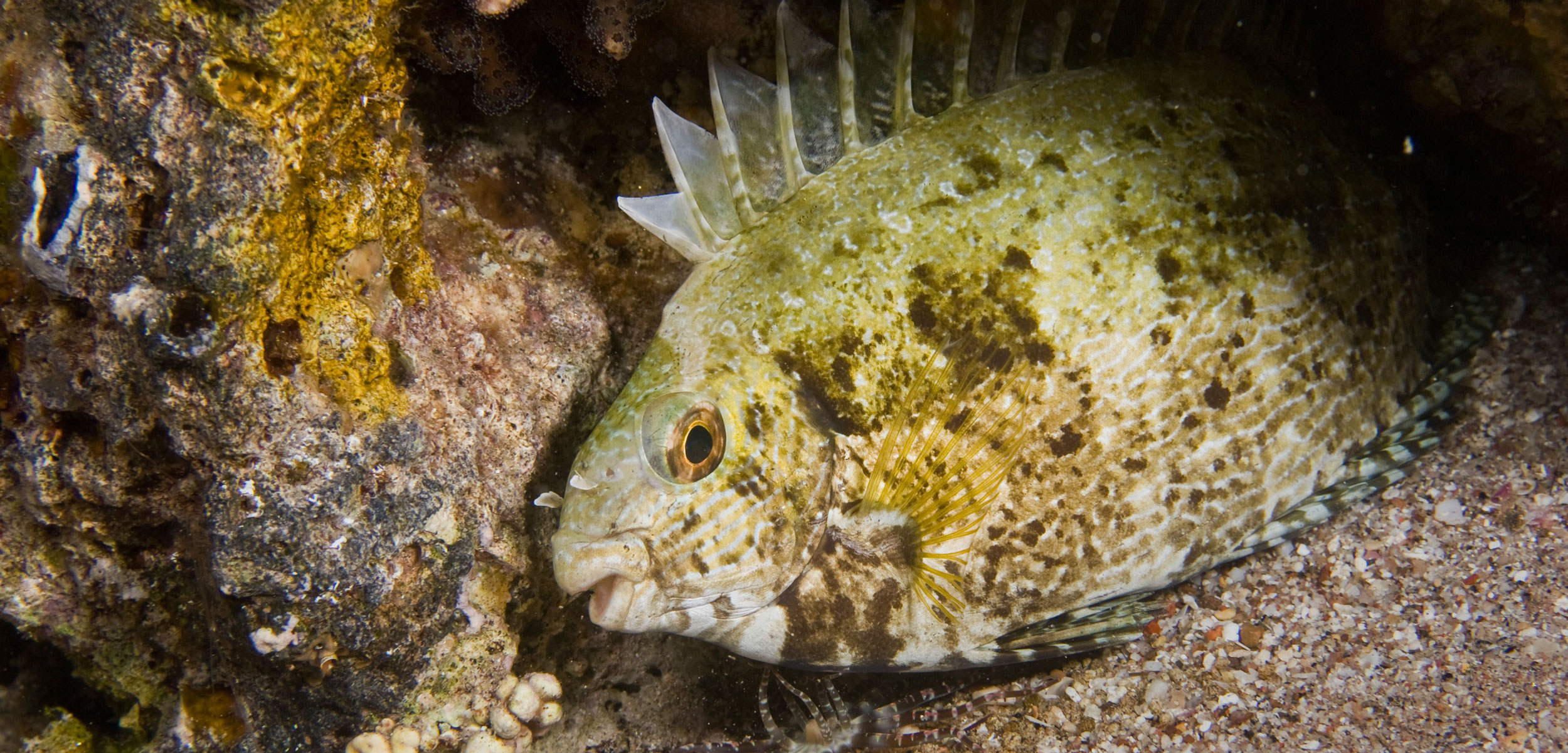Overheated Reefs Are Caught in a Vicious Carbon Cycle
A Mediterranean reef is turning tropical and could contribute to global warming.
Article body copy
Ohad Peleg spent his childhood snorkeling among lush seaweed forests in the cool Mediterranean Sea off the Israeli coast. When he dives there today, though, he sees a barren seascape overrun by tropical invaders, from seaweed-eating rabbitfish to plumes of red calcifying algae.
This is tropicalization in action. The phenomenon, in which flora and fauna from warm climates move into cooler regions that have endured heatwaves, is exemplified by tropical sea urchins decimating kelp forests in Tasmania and coral reef fish finding a permanent home in southern Japan.
“The influx of tropical species is transforming typical temperate reefs into more tropical ones,” says Peleg, a marine ecologist at the University of Auckland in New Zealand. “It’s pretty crazy.”
These tropical newcomers are changing more than just the appearance of temperate reefs. A new study has found that tropicalized reefs can switch from being rich carbon sinks, which pull carbon dioxide out of the water and store it, to carbon sources that contribute to further warming. The shift sets off a dangerous feedback loop that facilitates the spread of disruptive tropical invaders.
“It’s a slippery slope,” says Peleg, who led the study. “More warming increases tropicalization, which in turn increases carbon emissions.”
Peleg and his colleagues carried out a series of tests on a shallow rocky reef near Haifa, Israel. The team placed dome-shaped chambers over small plots of algae in three different habitats: near-pristine but increasingly rare native brown algal forest, rabbitfish-grazed algal turf, and swaths of tropical shrubs dominated by red calcifying algae.
After the algae incubated under the domes for a day, the researchers took a range of measurements in each habitat to assess changes in how the reef functioned, including how much carbon it stored and released, the biological diversity, and the abundance of fish.
They found that the native algal forest functioned as a carbon sink. It also supported the largest variety of organisms among the three habitats.
The turf habitat was dominated by rabbitfish, which migrated from the tropical reefs of the Red Sea through the Suez Canal, which cuts through Egypt. The fish grazed heavily on the algae, giving it a stripped-down appearance, which is now the most common state of reefs in the southeastern Mediterranean.
“Rabbitfish are one of the worst things to happen to the world’s temperate reefs,” says Peleg.
The team found that in contrast to the native algal forest, the turf community relied on outside sources for nutrients, from decomposed organisms to fish poop.
The tropical shrub community was as biologically diverse as the algal forest, but it emitted more carbon than it kept locked away. This surprised Peleg, as diverse ecosystems are typically more efficient at using carbon dioxide to power growth than those that support only a few species.
While the study was only conducted on a single reef, Peleg says the effects of tropicalization could be devastating at larger scales. Western Australia stands as a stark example. There, hundreds of kilometers of kelp forests have already been wiped out by marine heatwaves, with invasive tropical fish stripping away new algal communities before they are able to establish themselves.
“That’s a lot of stored carbon that’s not there anymore, meaning that some of it likely went back into the atmosphere,” says Peleg. “Where there’s no sink, carbon dioxide emissions increase.”
Peter Steinberg, a marine ecologist at the University of New South Wales in Australia, says the tropical shrub habitat in Peleg’s study is an intriguing new type of habitat that has not been seen previously.
“In other tropicalized communities there has been a shift to corals, so it will be interesting to see if this new algal state will persist,” says Steinberg, who was not involved in Peleg’s research. “There is potential for novel nutrient and carbon cycling that we don’t yet understand. These will likely affect the overall productivity of the ecosystem.”

